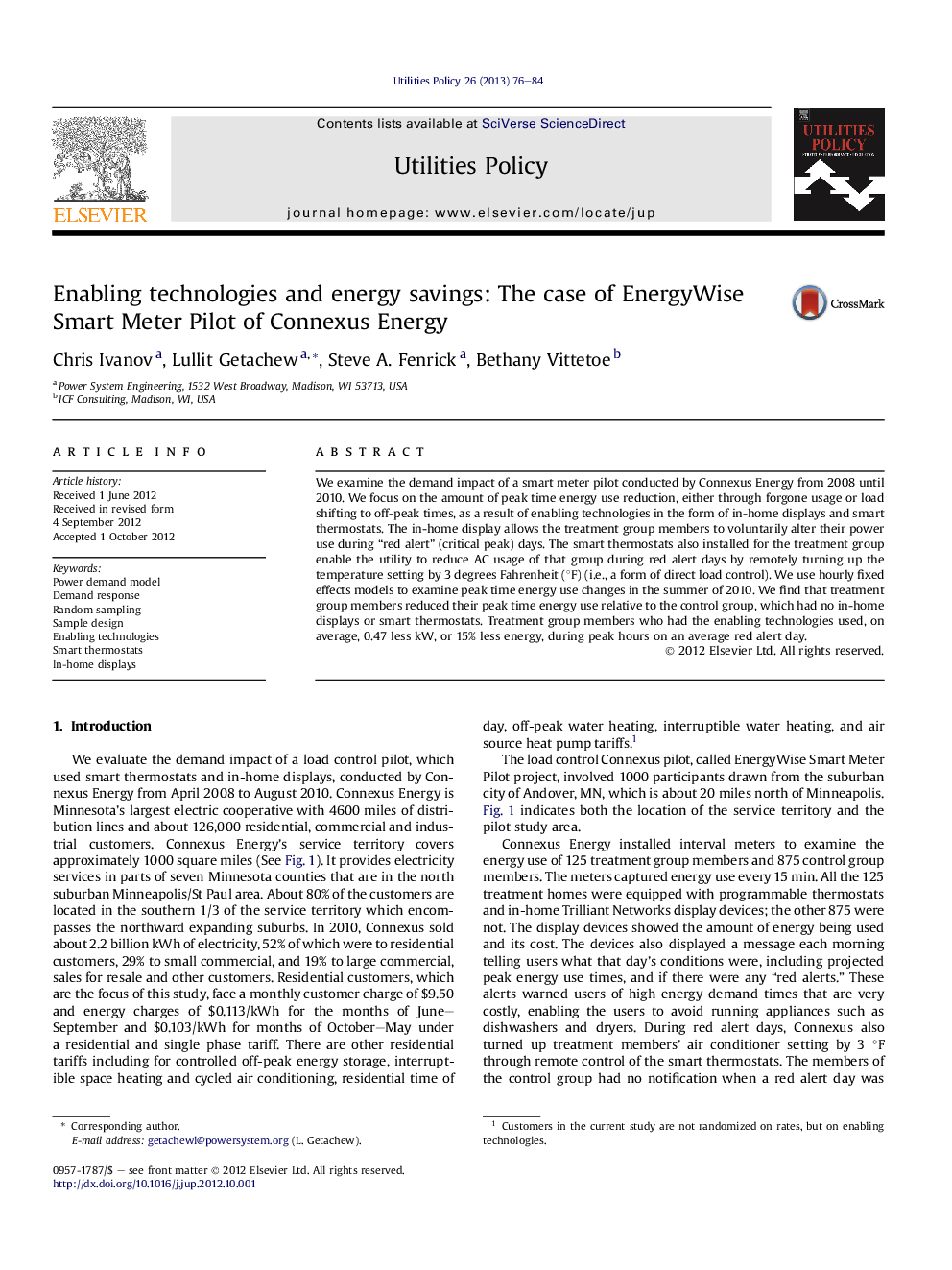| Article ID | Journal | Published Year | Pages | File Type |
|---|---|---|---|---|
| 1001068 | Utilities Policy | 2013 | 9 Pages |
We examine the demand impact of a smart meter pilot conducted by Connexus Energy from 2008 until 2010. We focus on the amount of peak time energy use reduction, either through forgone usage or load shifting to off-peak times, as a result of enabling technologies in the form of in-home displays and smart thermostats. The in-home display allows the treatment group members to voluntarily alter their power use during “red alert” (critical peak) days. The smart thermostats also installed for the treatment group enable the utility to reduce AC usage of that group during red alert days by remotely turning up the temperature setting by 3 degrees Fahrenheit (°F) (i.e., a form of direct load control). We use hourly fixed effects models to examine peak time energy use changes in the summer of 2010. We find that treatment group members reduced their peak time energy use relative to the control group, which had no in-home displays or smart thermostats. Treatment group members who had the enabling technologies used, on average, 0.47 less kW, or 15% less energy, during peak hours on an average red alert day.
► We examine the effect enabling technologies in the form of in-home displays and smart thermostats on peak demand. ► We use hourly data from treatment and control groups in a 2010 smart meter pilot study. ► We find treatment group members with enabling technologies used 15% less energy during peak hours on an average event day.
